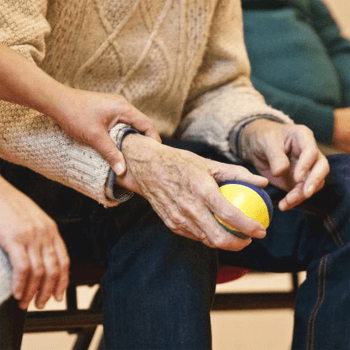May is Stroke Awareness Month

Stroke is the main cause of chronic disability and can reduce mobility.
By CHA Neurology Physician Shruti Sonni, MD.
Did you know that each year more than 795,000 people suffer from a stroke across the United States? 610,000 of these incidents are the first time someone has a stroke. Stroke is the dominant cause of chronic disability and can reduce mobility in more than 50% of survivors ages 65 and over. There are two main types of stroke, one is from a clot blocking a major blood vessel in the brain (also known as ‘ischemic stroke’) and the other is sudden bleeding inside the brain tissue (known as ‘hemorrhagic stroke’).
Hopefully, you have not experienced a stroke in your immediate family or close circle of friends but if you have, you know that it can change everything in an instant. Stroke survivors often have mood changes and their behavior can seem confusing to friends and family members. When an individual suffers from a stroke, long-standing family roles can reverse. Young adults may have to care for aging parents or siblings may have to take on nurturing one another.
A quick reaction can often reduce brain damage caused by a stroke. Here are some of the signs and symptoms to be on the lookout for:
- Intense headache with seemingly no cause.
- Difficulty walking, weakness in the arms or leg, loss of coordination or dizziness.
- Trouble seeing out of both or one eye, or double vision.
- Speech issues and problems understanding or producing language.
When a person is having a stroke, every second is crucial. The treatments that work best are available only if the stroke is recognized and diagnosed within 4.5 hours, though recent studies show that there are interventions that can be performed up to 24 hours in certain cases to reverse the deficits from a stroke. This does not mean that we should wait to see if the person starts getting better. Time wasted is brain tissue lost!
If you believe a person is having a stroke, use the F.A.S.T. test:
- Face: Ask the person to smile. Does one side of the face droop?
- Arms: Ask them to lift their arms. Does one arm drift down?
- Speech: Ask the person to speak a simple sentence a few times. Is their speech slurred?
- Time: If you witness any of these signs, dial 9-1-1 immediately.
Please, as we mentioned above, call 9-1-1 if you believe that you or someone you know is having a stroke.
Disclaimer
This articles provide general information for educational purposes only. The information provided in this article, or through linkages to other sites, is not a substitute for medical or professional care, and you should not use the information in place of a visit, call consultation or the advice of your physician or other healthcare provider.